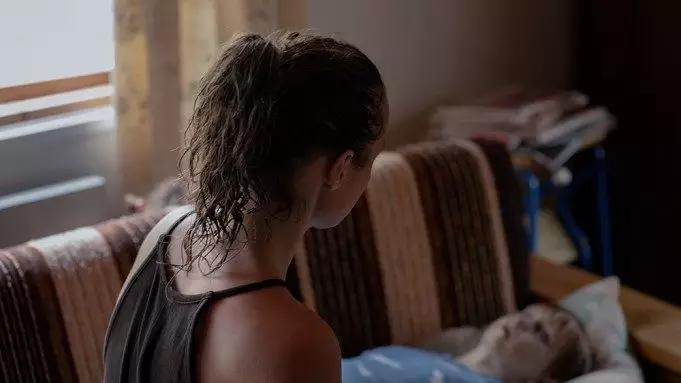In a genre often saturated with clichés and predictable plotlines, Director Thea Hvistendahl’s film, Handling the Undead, stands out as a refreshing departure. Co-written by Hvistendahl and John Ajvide Lindqvist, the movie takes a subtle approach, venturing beyond the expected chaos and horror to explore the complex dynamics of three families in the midst of an apocalyptic event. Through poignant storytelling and creative cinematography, Handling the Undead delves into the depths of human response to the unimaginable.
Handling the Undead introduces us to three families, each with their own unique struggles and relationships. The film begins by introducing Mahler, a grandfather, and his granddaughter, who share a strained connection due to the absence of a child. Next, we meet Tora, an elderly woman mourning the loss of her beloved partner. Finally, we are introduced to Eva and her daughter Flora, whose strained relationship adds another layer of complexity to the narrative. By presenting these divergent family dynamics, the film sets the stage for a profound exploration of human emotion.
Contrary to the conventions of zombie cinema, Handling the Undead is not a typical horror film. Instead, it captivates the audience through a slow-burn approach, characterized by atmospheric tension and dramatic storytelling. Rather than relying on jump scares and gory visuals, the film focuses on the psychological impact of reuniting with loved ones after death. This unique perspective sets Handling the Undead apart from its genre counterparts, offering a haunting and thought-provoking cinematic journey.
One of the film’s greatest strengths lies in its narrative structure and the seamless integration of three interconnected storylines. Hvistendahl and Lindqvist skillfully weave together the diverse experiences of their characters, unified by the common theme of loss. Throughout the film, a palpable sense of shock permeates the story, showcasing a range of human responses such as denial, acceptance, and confusion in the face of the undead’s unexpected return. The fluid transitions between stories maintain coherence and momentum, keeping viewers engaged while allowing each family’s journey to unfold.
Handling the Undead excels in its use of visual storytelling, relying on atmospheric cinematography and minimal dialogue to convey emotions and create an immersive experience. The Norwegian filmmaking sensibility shines through in the deliberate absence of unnecessary exposition, instead leveraging silence and evocative imagery to communicate the characters’ inner turmoil. This mastery of silent storytelling allows the audience to deeply connect with the film’s themes, as emotions reverberate louder than words.
As the film progresses, it succumbs to the allure of more traditional zombie elements, deviating from its initial unique approach. These familiar tropes, while not overly detrimental, dilute the film’s distinctive atmosphere and disrupt the meticulously crafted narrative. Additionally, some pacing issues arise, manifesting in scenes that lack purpose or fail to drive the storyline forward. However, these minor shortcomings do not overshadow the central core of the film, which ultimately emphasizes the necessity of letting go.
Handling the Undead serves as a poignant reminder that death forever alters the essence of our loved ones. It provides a sobering commentary on humanity’s struggle to cope with the return of the dead and how our desperate longing for the past can hasten our downfall. By exploring the depths of human response and the inevitability of transformation, the film prompts profound introspection.
In a landscape crowded with predictable zombie narratives, Handling the Undead distinguishes itself through its unique perspective. With its captivating storytelling, haunting atmosphere, and powerful exploration of human emotions, the film offers viewers a refreshing departure from the ordinary. Hvistendahl’s directorial finesse, alongside Lindqvist’s well-crafted script, creates an unforgettable cinematic experience that transcends the limitations of its genre.
Handling the Undead is a remarkable film that challenges expectations and conventions within the zombie genre. Through its poignant narrative, visual storytelling, and exploration of human response, it subverts the predictable tropes associated with the undead, delivering a haunting and thought-provoking experience. Despite minor flaws, the film’s unconventional approach and standout performances make it a standout in its genre, leaving a lasting impact on viewers.

